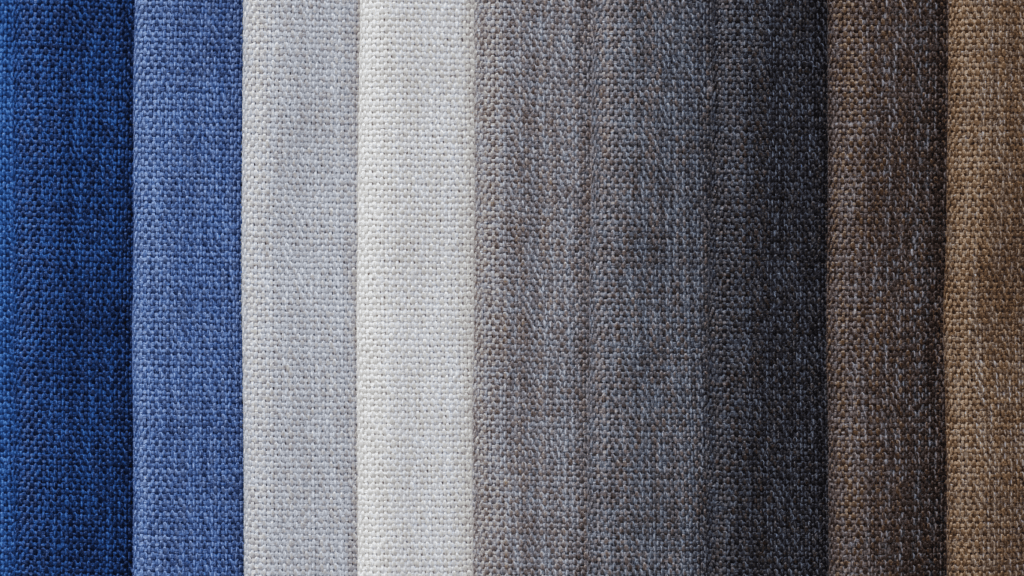Diving into the world of swimwear, I’m excited to explore the latest innovations in fabric technology and design trends that are making waves this season. From sustainable materials to cutting-edge performance fabrics, the evolution of swimwear is not just about style but also functionality. As a swimwear enthusiast, I’ve witnessed the industry’s constant push towards creating pieces that not only look fabulous but also enhance the overall swimming experience.
In this article, I’ll take you on a journey through the newest developments in swimwear fabric and design, highlighting how these advancements are revolutionizing the way we approach beach fashion. Whether you’re a beach bum or a competitive swimmer, staying informed about the latest trends in swimwear is essential to making a splash with your summer wardrobe. So, grab your sunscreen and shades as we dive deep into the world of swimwear innovation.
Evolution of Swimwear Fabrics
Swimwear fabrics have undergone a remarkable evolution, adapting to meet the needs of swimmers and beach fashion enthusiasts alike. Let me delve into the transformation from traditional materials to the innovative fabrics that define modern swimwear.
- Traditional Materials and Their Limitations
In the past, swimwear was primarily crafted from materials like cotton and wool. While these fabrics offered comfort, they had significant drawbacks for swimwear. Cotton tends to absorb water, making swimwear heavy and causing it to sag, while wool can be itchy and uncomfortable when wet. These limitations led to the need for more suitable materials in swimwear construction. - Innovative Fabrics in Modern Swimwear
Modern swimwear designers have embraced a plethora of innovative fabrics to enhance performance and comfort. Fabrics like nylon, spandex, and polyester have revolutionized the swimwear industry. Nylon provides durability and quick-drying properties, while spandex offers flexibility and stretch for a comfortable fit. Polyester is known for its chlorine resistance, making it ideal for frequent pool use. These modern fabrics have not only improved the functionality of swimwear but also opened up endless possibilities for creative and trendy designs in beach fashion.
Breakthrough Designs in Swimwear
Exploring the latest advancements in swimwear reveals exciting breakthrough designs that not only enhance performance but also prioritize sustainability, setting new standards in the industry.
Performance-Enhancing Features
Innovative swimwear designs now integrate performance-enhancing features to improve the swimmer’s experience. These features include compression technology, which aids in muscle support and reduces drag in the water, resulting in enhanced speed and efficiency. Additionally, hydrophobic coatings repel water, allowing swimmers to glide through the water with minimal resistance. Seamless constructions and strategic seam placements minimize chafing, offering superior comfort and mobility during swimming activities.
Sustainability in Swimwear Design
The shift towards sustainability in swimwear design has paved the way for eco-friendly materials and manufacturing processes. Recycled nylon and polyester fabrics are being utilized to create stylish and durable swimwear pieces while reducing environmental impact. Furthermore, innovative techniques such as digital printing reduce water consumption and waste in the production of swimwear designs. Brands are also focusing on ethical labor practices and transparent supply chains to ensure that sustainability is at the core of their operations, aligning with the growing demand for environmentally conscious fashion choices in the swimwear industry.
The Role of Technology in Swimwear Development

Innovations in swimwear have been significantly influenced by cutting-edge technology, shaping the industry’s evolution and enhancing both performance and design aspects.
Smart Fabrics and Wearable Tech
Smart fabrics and wearable technology have revolutionized the swimwear landscape, offering features like UV protection, quick-drying capabilities, and even built-in sensors for tracking performance metrics such as lap times and heart rate. These advancements not only elevate the functionality of swimwear but also provide swimmers with valuable data to improve their training and overall swimming experience.
Digital Design Tools and Customization
Digital design tools and customization options play a crucial role in creating swimwear that is not only visually appealing but also tailored to individual preferences and needs. From 3D modeling software that allows designers to visualize their creations to custom sizing technologies that ensure a perfect fit, digital tools empower both designers and consumers to explore new design possibilities and personalized swimwear solutions.
Consumer Preference and Market Trends
As swimwear fabrics and designs continue to evolve, understanding consumer preferences and market trends becomes crucial for the industry’s success. Here, I delve into the shifts in consumer demand and their impact on the swimwear industry.
Shifts in Consumer Demand
Consumer preferences in swimwear have seen a notable shift towards sustainable and eco-friendly options. Customers are increasingly drawn to swimwear made from recycled materials and manufactured using sustainable practices. Brands that embrace these eco-conscious initiatives are gaining traction in the market, reflecting the growing demand for ethically produced swimwear.
Furthermore, there is a rising interest among consumers for versatile swimwear that offers multi-functionality. Pieces that can transition seamlessly from the beach to other activities are in high demand. Swimwear designs that prioritize both style and functionality cater to this evolving consumer need for versatility in their wardrobe choices.
Impact on the Swimwear Industry
The changing consumer demand for sustainable and versatile swimwear has a significant impact on the industry. Swimwear manufacturers are adapting to meet these preferences by integrating eco-friendly materials into their production processes and offering functional designs that align with the active lifestyles of their customers.
Moreover, the emphasis on sustainability and versatility in swimwear has led to collaborations between designers and technology companies to create innovative solutions. From utilizing advanced fabrics that provide optimal performance to incorporating smart technology for enhanced functionalities, the industry is witnessing a transformation driven by consumer demand for more eco-conscious and versatile swimwear options.
Keeping a pulse on consumer preferences and market trends is essential for swimwear brands looking to stay relevant and competitive in an ever-evolving industry landscape. By aligning with the shifting demands of consumers, manufacturers can drive innovation, create sustainable products, and deliver swimwear designs that resonate with today’s conscious and multifaceted consumers.


 is a dedicated fitness enthusiast with a deep-seated passion for swimming and holistic health. Leveraging her extensive background in competitive swimming and personal training, she provides readers with expert advice on optimizing their workouts and enhancing their overall well-being. Kiara's writing stands out for its blend of motivation and practical tips, making complex fitness concepts accessible and actionable. She is committed to helping individuals of all levels reach their fitness goals by promoting a balanced approach to exercise and nutrition. In her articles on Swim Fast Stay Fit, Kiara shares her personal experiences, training techniques, and strategies for overcoming common fitness challenges, inspiring others to lead healthier and more active lives.
is a dedicated fitness enthusiast with a deep-seated passion for swimming and holistic health. Leveraging her extensive background in competitive swimming and personal training, she provides readers with expert advice on optimizing their workouts and enhancing their overall well-being. Kiara's writing stands out for its blend of motivation and practical tips, making complex fitness concepts accessible and actionable. She is committed to helping individuals of all levels reach their fitness goals by promoting a balanced approach to exercise and nutrition. In her articles on Swim Fast Stay Fit, Kiara shares her personal experiences, training techniques, and strategies for overcoming common fitness challenges, inspiring others to lead healthier and more active lives.
